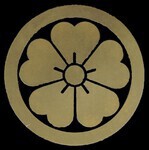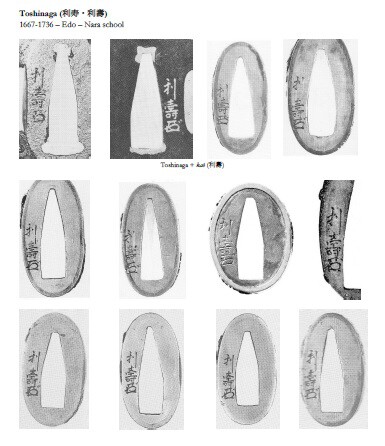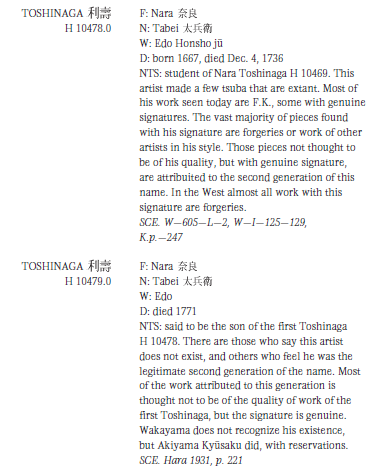-
Posts
3,242 -
Joined
-
Days Won
99
Content Type
Profiles
Forums
Events
Store
Downloads
Gallery
Everything posted by Guido
-
That's why I always make a point of never omitting the long vowels
-
Both John and Ted are correct: 古代 = kodai = old or ancient times 後代 = kôdai (or koudai)= late generation
-
Just out of curiosity: does pressure sensitive paper really work for oshigata? I've never seen it used in Japan, and would imagine that a sword needs to have really rough ara-nie for any activities to show on the paper ...
-
-
Thanks for the flowers, Brian! Yes, sageo are kind of a pet peeve of mine; I always look at how they are tied, and try to recreate them, to give my swords a liitle more variety.
-
O.k., here we go. This knot can be done on either the ha or mune side, and is a great option if there's a kozuka and/or kōgai that you don't want to be (partially) covered by the sageo. Or if the sageo would otherwise interfer with the katanakake. knot.pdf
- 26 replies
-
- 12
-

-
When I get back home from work I'll post a photo tutorial (it's actually quite easy to do [but then again, anything is easy if one knows how to do it ]).
-
There is : tsuba: shōchikubai 松竹梅 (pine & bamboo & plum tree) motif, iron menuki: akigusa 秋草 (autumn plants) motif, shakudō I can't make out the details for the fuchigashira, except that it's made of shinchū (brass).
-

Tying Sageo On An Efu Tachi
Guido replied to Grey Doffin's topic in General Nihonto Related Discussion
These are instructions for a "regular" tachi - looks to be the same, except for more loops because of the lesser width of the sageo: http://www.n-p-s.net/musubi4.htm You can give the sageo more slack between the obitori and the saya which would look like this (a tachi in my collection): -
Correct. Nihon Bijutsu Tōken Hozon Kyōkai Kaichō Shō 日本美術刀剣保存協会会長賞, Chairman of the Society for the Preservation of the Japanese Art Sword Award. P.S.: Oops, just see that John was faster.
-
Pray that Jean never sees this ...
-
Stephen, "regular" katana length is 180 cm, wakizashi 120 cm. There’s not much of a difference in length needed whether you tie a rōnin-musubi or chō-musubi, even if it appears so in pictures. 220 cm is called chōsun, extra long, and often used by iaidō practitioners. In order to achieve a nice looking sageo knot silk is best (since it’s rather stiff and holds the loops well), but good quality synthetic sageo can yield a nice result, too; but stay away from cotton, it’s too limp. Synthetic material sageo are around Yen 1,500, silk usually starts at Yen 4,500. I would advise against using the cord shown in the picture of your first post, it looks too thin, and doesn’t appear to be proper sageo. Sometimes cords for tying traditional boxes, or obishime for kimono, are marketed as sageo. In any case, I attached a tutorial on shortening sageo; sorry, Japanese only, but the pictures speak a universal language. sageo shortening.pdf
-

Oddest Tsuba Name Sale In Fleabay Histroy
Guido replied to lonely panet's topic in Auctions and Online Sales or Sellers
More tsuba description gems from him: -
Ah, well, seems like my twisted sense of humor is unique after all ...but at least I have one ...
-
I'm not Ray, but tend to write similar replies , soooo ... I think he was being funny, i.e. along the lines of "Thou Shalt Not Tempt Me!"
-
Noooot really, that would be 月山造 - this one is "inscribbled" 日山道: Hiyamamichi??? (But I think it's rather pronunced Rìshāndào.) In my experience of living on and off in China for eight years, that's how a faker imagines a Japanese name looks like ... P.S.: I think the three random mekugiana are pretty hilarious - nice try ... (and give the man a deburring tool!)
-
Do you mean Genusstauglichkeitskennzeichen (https://de.wikipedia.org/wiki/Genusstauglichkeitskennzeichen) (https://en.wikipedia.org/wiki/EC_identification_and_health_marks)?
-
The photos in my book are generally of the (low) quality of the crane tsuba Chris posted, but none are as bad as his other examples. It would be nice to have better pics, but they are sufficient for illustrations accompanying the text, which is the main source of information. If I want to look at high resolution eye candy in full color, I go to some other books in my library (that are also in a completely different price range). But having said that, it certainly wouldn't hurt Lulu's reputation if they'd work on their quality control.
-
There will be 5 volumes in all - at least I hope so, since I paid for them in advance
-
Names are usually read kun-yomi, so that would make it "Tomonuno" - kind of an odd name ...
-
I couldn't find an exact match, but I think you can't be wrong calling it 剣花 kenka. https://www.google.co.jp/search?biw=1280&bih=667&tbm=isch&sa=1&ei=TSM4W_u0NcS-0gTZgKOQAg&q=%E5%89%A3%E8%8A%B1%E5%AE%B6%E7%B4%8B&oq=%E5%89%A3%E8%8A%B1%E5%AE%B6%E7%B4%8B&gs_l=img.3..0i8i7i30k1.12835.14917.0.16670.7.7.0.0.0.0.109.620.6j1.7.0....0...1c.1j4.64.img..0.2.193...0i23k1j0i24i23k1j0i5i30i23k1.0.HilYItaKClg
-
What I see is 柳玉(?) 友布 Following the usual pattern, the (?) should be 斎, i.e. Ryūgyokusai 柳玉斎, but the kanji doesn’t look anything like that …
-
Interesting, I've never seen that. But shouldn't it be 777 years then?




